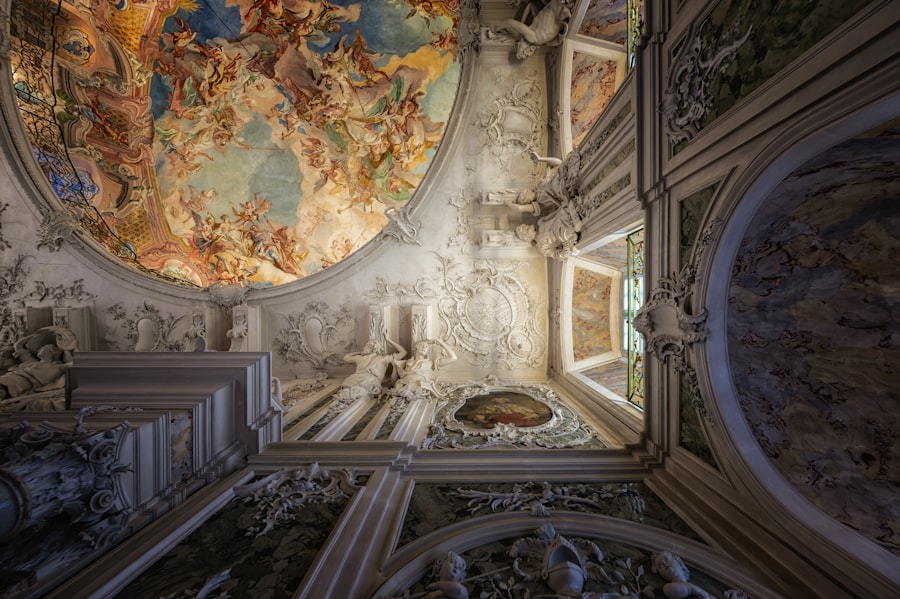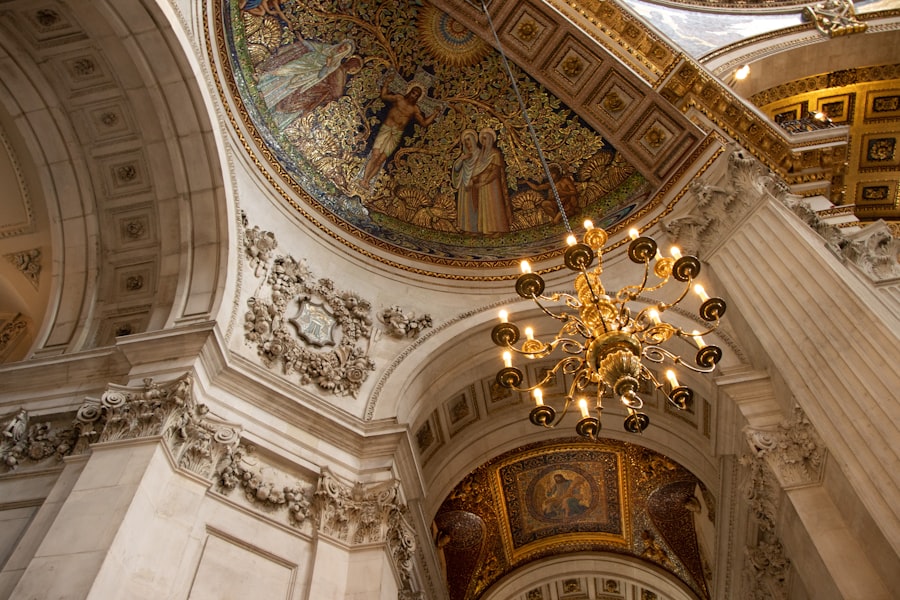Manila Cathedral: A Historic Landmark in the Philippines
Description
The Manila Cathedral, officially known as the Cathedral-Basilica of the Immaculate Conception, has its roots deeply embedded in the history of the Philippines. Its origins can be traced back to 1581 when the first church was constructed under the auspices of the Spanish colonial government. This initial structure was built primarily from bamboo and nipa palm, reflecting the indigenous materials available at the time.
However, it was not long before this first iteration succumbed to the ravages of fire and natural disasters, a fate that would befall many subsequent versions of the cathedral. In 1598, a more durable structure was erected, this time using stone, marking a significant shift in architectural ambition. The church was elevated to cathedral status in 1581, becoming the seat of the Archdiocese of Manila.
Over the years, the cathedral underwent several reconstructions due to earthquakes and other calamities, each time reflecting the evolving architectural styles and techniques of the period. The resilience of the Manila Cathedral is emblematic of the broader history of the Philippines, where cultural and religious influences have intermingled to create a unique identity.
Key Takeaways
- Manila Cathedral was originally built in 1571 and has undergone several reconstructions due to natural disasters and wars.
- The architectural features of Manila Cathedral include a combination of Romanesque, Renaissance, and Baroque styles, with intricate carvings and stained glass windows.
- The historical significance of Manila Cathedral is tied to the country’s colonial past, as it served as the seat of the Archbishop of Manila and witnessed key events in Philippine history.
- Renovations and restoration efforts have been ongoing to preserve the cathedral’s structural integrity and historical significance.
- Important events and ceremonies held at Manila Cathedral include state funerals, papal visits, and significant religious celebrations, making it a focal point of national and religious identity.
Architectural Features of Manila Cathedral
The Exterior: A Blend of Styles
The current structure, completed in 1958, showcases a blend of Romanesque and Neo-Romanesque styles, characterized by its grand façade adorned with intricate carvings and sculptures. The cathedral’s imposing entrance is flanked by two bell towers, which not only serve a functional purpose but also enhance its aesthetic appeal.
The high vaulted ceilings create an atmosphere of grandeur and reverence, drawing visitors into a space that feels both sacred and monumental.
A Masterpiece of Cultural Heritage
The altar is another focal point, featuring a beautifully crafted retablo that serves as a backdrop for liturgical ceremonies. The overall design harmonizes functionality with artistry, making Manila Cathedral not just a place of worship but also a work of art that reflects the cultural heritage of the Philippines.
Historical Significance of Manila Cathedral

Manila Cathedral holds immense historical significance as it has been at the center of many pivotal events in Philippine history. As the seat of the Archdiocese of Manila, it has played a crucial role in shaping the religious landscape of the country. The cathedral has witnessed numerous important ceremonies, including the consecration of archbishops and significant religious events that have drawn thousands of faithful from across the archipelago.
Its status as a national landmark underscores its importance not only as a religious institution but also as a symbol of Filipino identity. Moreover, the cathedral has served as a witness to historical upheavals, including colonial rule, wars, and revolutions. During World War II, it was severely damaged during the Battle of Manila in 1945, an event that marked a tragic chapter in Philippine history.
The destruction of the cathedral during this tumultuous period serves as a reminder of the resilience of both the structure and the Filipino people. The rebuilding efforts that followed were not merely about restoring a building; they were about reclaiming a piece of national heritage that had been lost amidst chaos.
Renovations and Restoration Efforts
| Project Name | Location | Start Date | Completion Date | Investment |
|---|---|---|---|---|
| Historic Building Renovation | New York City | January 2020 | June 2021 | 5,000,000 |
| Community Center Restoration | Los Angeles | March 2019 | December 2020 | 3,500,000 |
| Church Renovation | Chicago | July 2020 | October 2021 | 2,800,000 |
The journey of Manila Cathedral has been marked by numerous renovations and restoration efforts aimed at preserving its architectural integrity while adapting to contemporary needs. After World War II, extensive restoration work was undertaken to rebuild what had been lost. The 1958 reconstruction was led by architect Fernando Ocampo, who sought to honor the original design while incorporating modern techniques and materials.
This careful balance between preservation and innovation is evident in the cathedral’s current form. In recent years, further restoration projects have focused on maintaining the structural stability of the building while enhancing its aesthetic qualities. These efforts have included repairs to the façade, restoration of stained glass windows, and improvements to lighting systems to better showcase its architectural features.
The commitment to preserving Manila Cathedral reflects a broader recognition of its cultural significance and an understanding that such historical landmarks are vital to national identity. Each renovation not only aims to restore physical elements but also seeks to reinforce the spiritual connection that generations have felt towards this sacred space.
Important Events and Ceremonies Held at Manila Cathedral
Throughout its history, Manila Cathedral has been a venue for numerous significant events and ceremonies that resonate deeply within Filipino culture. It has hosted countless weddings, baptisms, and confirmations, marking important milestones in the lives of many Filipinos. These ceremonies are often imbued with deep cultural significance, blending traditional Filipino customs with Catholic rituals.
The cathedral serves as a backdrop for these life events, providing a sacred space where families come together to celebrate their faith and heritage. In addition to personal milestones, Manila Cathedral has been the site for major national events. It has hosted state funerals for prominent figures in Philippine history, including former presidents and national heroes.
These solemn occasions draw large crowds and serve as moments for collective mourning and reflection on national identity. Furthermore, significant religious celebrations such as Christmas Eve Mass and Easter Vigil attract thousands of worshippers each year, reinforcing the cathedral’s role as a central hub for spiritual life in Manila.
Manila Cathedral’s Role in Philippine Culture and Society

The influence of Manila Cathedral extends far beyond its walls; it plays an integral role in shaping Philippine culture and society. As one of the oldest churches in the country, it stands as a symbol of faith for many Filipinos and serves as a reminder of their shared history. The cathedral is often featured in cultural narratives, literature, and art, reflecting its importance in the collective consciousness of the nation.
It embodies not only religious devotion but also resilience in the face of adversity. Moreover, Manila Cathedral serves as a gathering place for social movements and community initiatives. It has been a venue for dialogues on pressing social issues such as poverty, human rights, and environmental concerns.
The church’s leadership often engages with these issues from a moral standpoint, encouraging congregants to reflect on their responsibilities as citizens. This engagement with societal challenges underscores the cathedral’s role as not just a religious institution but also a vital participant in shaping public discourse in contemporary Philippine society.
Manila Cathedral as a Tourist Destination
As one of Manila’s most iconic landmarks, Manila Cathedral attracts both local and international tourists eager to explore its rich history and architectural beauty. Visitors are often drawn by its impressive façade and serene interior, making it a popular stop on cultural tours of the city.
Tourists are not only captivated by its aesthetic qualities but also by its historical narratives. Guided tours often delve into stories about its construction, destruction during wars, and subsequent restorations. These narratives provide context for understanding not just the cathedral itself but also its place within Philippine history.
Additionally, cultural events such as concerts and art exhibits held within its walls further enhance its appeal as a destination where history meets contemporary culture.
Future Plans for Manila Cathedral
Looking ahead, there are ongoing discussions about future plans for Manila Cathedral aimed at ensuring its preservation for generations to come. These plans include continued restoration efforts that focus on maintaining structural integrity while enhancing visitor experience through improved facilities and accessibility features. There is also an emphasis on integrating modern technology into the cathedral’s operations without compromising its historical character.
Furthermore, there is potential for expanding educational programs that engage both locals and tourists in understanding the significance of Manila Cathedral within Philippine history and culture. Workshops, lectures, and interactive exhibits could provide deeper insights into its architectural features and historical context. As Manila Cathedral continues to evolve while honoring its past, it remains committed to being a vibrant center for faith, culture, and community engagement in an ever-changing world.
If you are interested in learning more about the Manila Cathedral, you may also enjoy reading about the security measures taken to protect such historical landmarks in the article “Security Elite: Elimina Virus, Antivirus, Acelerador”. This article discusses the importance of safeguarding important sites like the Manila Cathedral from potential threats.
FAQs
What is the Manila Cathedral?
The Manila Cathedral, also known as the Metropolitan Cathedral of the Immaculate Conception, is a Roman Catholic basilica located in the Intramuros district of Manila, Philippines.
When was the Manila Cathedral built?
The original Manila Cathedral was built in 1581, but it has been destroyed and rebuilt several times due to natural disasters and wars. The current structure was completed in 1958.
What is the architectural style of the Manila Cathedral?
The Manila Cathedral features a combination of architectural styles, including Baroque, Neo-Romanesque, and Neo-Byzantine influences.
What is the significance of the Manila Cathedral?
The Manila Cathedral is a significant religious and cultural landmark in the Philippines. It has been the site of many important events in the country’s history, including the papal visits of Pope Paul VI in 1970 and Pope John Paul II in 1981 and 1995.
Is the Manila Cathedral open to the public?
Yes, the Manila Cathedral is open to the public for worship, prayer, and guided tours. Visitors are welcome to explore the cathedral’s interior and learn about its history and significance.





